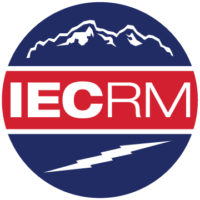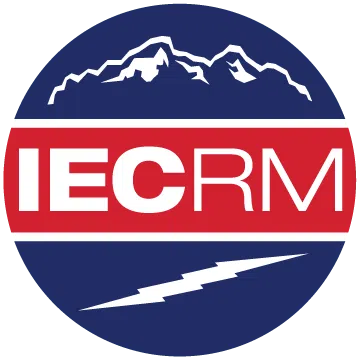OSHA – Staffing Agencies & Shared Worker Documentation

This Safety Forum was hosted by Paul Lingo, IECRM Training Director, in partnership with John Olaechea, Compliance Assistant Specialist for OSHA Region VIII to discuss the importance of OSHA Documentation and will highlight the new guidelines that have been put in place during COVID response and return to work.
SAFETY FORUM RECAP (all resources from OSHA):
PROTECTING TEMPORARY WORKERS:
- An increase in staffing agencies-3 million people are employed by staffing companies every week. They are injured at a higher rate than normal workers. Reasons:
- They are not familiar with the tasks that they are asked to perform.
- They are unfamiliar with the work environment.
- Employers don’t provide the same level of training for temporary employees leading to more on-the-job injuries.
- OSHA is doing more to contact staffing agencies and employers to ensure that they are protecting their workers appropriately.
- Both the staffing agency and host employers have roles in complying with workplace health and safety requirements and they share responsibility for ensuring worker safety and health
- Both the host employer and the staffing agency are employers of the temporary worker
- OSHA can use the General Duty Clause to require employees to conduct an assessment of the hazards.
- If there are reasonable things that can be done by the employers to increase safety, OSHA expects that to be done.
- What are the risks to the employees?
- What has the employer done to reduce those risks?
- Make sure you have all the required documents required by OSHA standards.
TRAIN STAFFING AGENCY STAFF TO RECOGNIZE HAZARDS:
- They need to be training their staffing agency staff to recognize the hazards
- After identifying hazards, the staffing agency is more able to pick the best temporary worker for the job.
ENSURE EMPLOYER MEETS THE OTHER EMPLOYER’S STANDARDS:
- Host employers need to also evaluate their staffing agency to make sure they are being responsible when selecting temporary workers.
- There is the responsibility of both parties.
- Citations are issued when PPE is not given to the temporary workers. These citations can be enforced on the host employer and the staffing agency.
- If the host employer allows the temporary worker to work without the correct PPE, they are also liable for citation.
- Ensure that the temporary worker has received the appropriate training from the Staffing Agency before coming to the host job site.
INCIDENT, INJURY, and ILLNESS INVESTIGATION
- It is recommended that BOTH staffing agency and host employer investigate any complaints or reports
- Incidents should always be investigated, even near misses.
RECORDKEEPING
- Both employers should be recording any injuries, however, the injury should only be recorded on one log.
- Any incidents, injuries, and illnesses should be recorded on the log of the host employer’s log if it occurred at the employer’s site. It doesn’t make sense to attribute that illness or injury to staffing agency because that’s not where it happened.
- Make sure you have all the required documents required by OSHA standards.
- Make sure you keep evaluating and updating as OSHA standards are updated or changed.
What OSHA expects from Employers in response to COVID-19
There are some businesses that have a greater risk of exposure than other businesses:
- Healthcare and Laboratories
- Emergency Response
- Mortuary services and other deathcare
- Airline operations
- Border protection and passenger screening
- Critical retail operations (e.g. grocery stores, pharmacies)
Workers in other sectors, including some in critical infrastructure, may be at risk because of frequent or long-duration contact with coworkers:
- Food processing (including meatpacking)
- Manufacturing
- Construction
- Oil and gas
- Other sectors where workers would typically be within under 6 feet of one another
For more information about workers exposure risk to COVID-19 please visit OSHA’s website: https://www.osha.gov/Publications/OSHA3993.pdf
OSHA Enforcement during COVID-19 (see OSHA Website for update interim enforcement during COVID-19)
- Employers need to assess exposure risks. What can be done to control these risks?
- OSHA is doing what they can to help employers through their guidance on what they expect employers to do and follow during the COVID pandemic.
TIPS FOR RESPIRATORS AND OTHER FACE COVERINGS
- Fit testing needs to be done. OSHA has allowed if employers were showing good faith efforts to conserve respirators, they wouldn’t require fit testing annually. Fit testing is STILL REQUIRED, but OSHA can use discretion and not require the regular policy with the understanding that this can change at any point.
- Make sure that any respirators that are being used for an extended period of time or being reused are recorded into your written policies (update as they change). Include WHEN that respiratory is no longer usable from a safety standpoint.
- OSHA allowed for use beyond the manufacturers’ shelf-life. They did a sampling of various masks https://www.cdc.gov/niosh/npptl/ppecase.html
- Respiratory Protection certified under other countries.-Respiratory
- NIOSH certified respirators are OSHA approved but due to shortage, people can use the following:
- Other respirators certified by other countries, excluding China
- https://www.cdc.gov/niosh/npptl/topics/respirators/disp_part/N95list1.html)
- If NIOSH mask is decontaminated, it is no longer OSHA approved, though it may be better than a cloth mask
- NIOSH certified respirators are OSHA approved but due to shortage, people can use the following:
- With all of these guidelines, OSHA is looking for good faith efforts, and discretion is up to OSHA for citations during COVID (can change at any time). Be ready to explain why it has taken so long to be conducted or hasn’t been conducted.
LINKS MENTIONED ON TODAY’S FORUM
- Protecting Temporary Workers: https://www.osha.gov/temporaryworkers
- How OSHA is addressing and responding to COVID: osha.gov/cornavirus
- General Duty Clause: https://www.osha.gov/laws-regs/oshact/section5-duties
- OSHA Injury and Illness Recordkeeping and Reporting Requirements: https://www.osha.gov/recordkeeping/
- S. Department Of Labor Issues Alert To Help Keep Construction Workers Safe During The Coronavirus Pandemic: https://www.dol.gov/newsroom/releases/osha/osha20200421
- Worker Exposure Risk to COVID-19: https://www.osha.gov/Publications/OSHA3993.pdf
- Report of Respirator Masks Sampling: https://www.cdc.gov/niosh/npptl/ppecase.html
- OSHA Updates for Construction Workforce: https://www.osha.gov/Publications/OSHA4000.pdf
OSHA INJURY AND ILLNESS RECORDKEEPING AND REPORTING REQUIREMENTS
Enforcement guidance for (links below from OSHA Website):
- Handling COVID-19-related complaints, referrals, and severe illness reports (Interim Enforcement Response Plan) (on or after May 26, 2020)
- Recording cases of COVID-19 ( on or after May 26, 2020)
- Required annual fit-testing in healthcare and all other industries
- Enforcement Guidance for Respiratory Protection and the N95 Shortage Due to the Coronavirus Disease 2019 (COVID-19) Pandemic: Supply shortages of disposable N95 filtering facepiece respirators (FFRs)
- Use of respiratory protection equipment certified under standards of other countries
- Decontamination of FFRs in healthcare
- Considering employers’ good faith efforts to comply with OSHA-mandated training, audits, assessments, inspections, and testing
